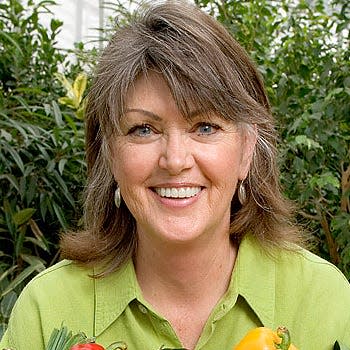Gardening for You: Foodscaping American Cottage Gardens
Foodscaping is a nifty word for creating gardens that are beautiful to look at and are tasty as they make their way to the table. Landscaping with edible plants is a charming way to grow your own produce.

Food landscaping is not new to 21st century gardens but the word “foodscaping” is relatively new. Exactly when the word came into our vocabulary is uncertain.
But many of us have been practicing this art of gardening without labeling it.
The art of gardening with edibles and ornamentals epitomized by English kitchen or cottage gardens and French kitchen or potager gardens has been around for many years. Practiced centuries before by Roman villa gardens.
A bit of trivia: the term French potager garden was derived from the Old French term potage or pottage, a thick soup with a base that is made from the boiling of vegetables (The Oxford Companion to Food).
French potagers have a more formal design than English cottage gardens. French potagers are often edged with boxwoods or similar low growing perennials trained into geometric designs. There is a rigid element to the design.
Textures of plants in English cottage or kitchen gardens are softer, freer in shape and more relaxed, giving a more natural impression. English gardens are planned yet not as restrained as French potagers.
Gardeners have the freedom to plant in designs that fit our personality and lifestyle. We are not limited to being just vegetable or flower or herb gardeners. As “foodscapers” we intermingle and integrate edibles into what might be called American cottage gardens, using our independent spirit to grow what we want without struggling to fit our garden into a category of landscape design.
Our gardens are designed with plants that we like, that suit our individuality, palates, and culinary flairs. Foodscape designs use patches of plants that flow with the season, crafting collages of early season annuals and perennials that yield to mid-season plants, mid-season plants in turn giving way to late season plants.
Herbs and perennials shape the backbone of a garden while letting annuals shine with bursts of color. Volunteer generations from reseeding annuals give gardens a freedom to form their own design.

Plants doubling as ornamentals and edible in foodscape kitchen gardens number into the hundreds and most attract pollinators. Reliable perennial herbs include yarrow (tea infusions) with yellow, pink, or white flowers; rosemary, delicate lilac flowers; sage and lavender, tall purple spikes; spreading tarragon. Generously reseeding annuals include dill with yellow spikes; basil and cilantro, pure white blossoms; and reseeding biennials like fennel and parsley, tall lacy yellow blooms.
Alliums are favorite edibles with ornamental value – early-flowering robust bunching onion and delicate chives, mid-season blooms of garlic chives and late-flowering leek.
The list of perennials and annuals that provide seasonal interest is limited only by the gardener’s choice; a few are iris, larkspur, peony, Dahlia, Rudbeckia, Echinacea, Artemisia, daylily, goldenrod, phlox, rose, daisy, aster.
The reward for the gardener is cutting a fresh flower bouquet from the garden and on the way indoors snipping herbs for the table.
Ellen Peffley taught horticulture at the college level for 28 years, 25 of those at Texas Tech, during which time she developed two onion varieties. She is now the sole proprietor of From the Garden, a market garden farmette. You can email her at gardens@suddenlink.net
This article originally appeared on Lubbock Avalanche-Journal: Gardening for You: Foodscaping American Cottage Gardens




